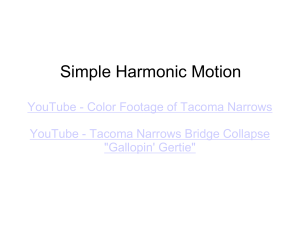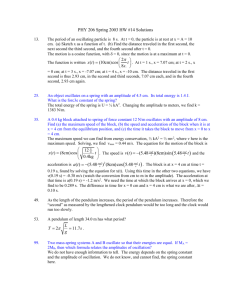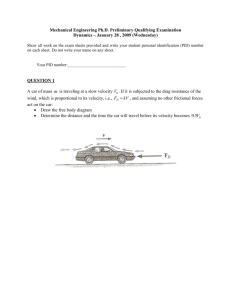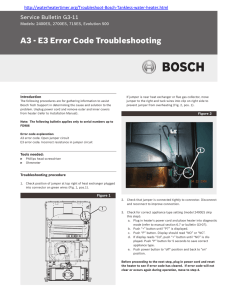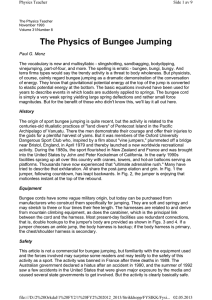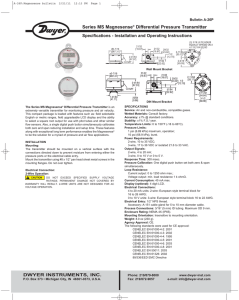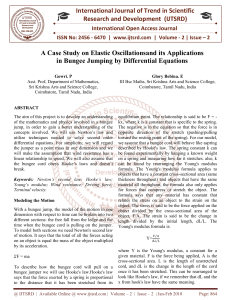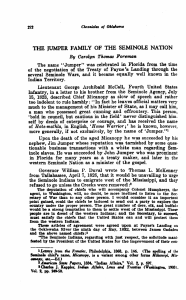Unit D UA pt A - SHM
advertisement
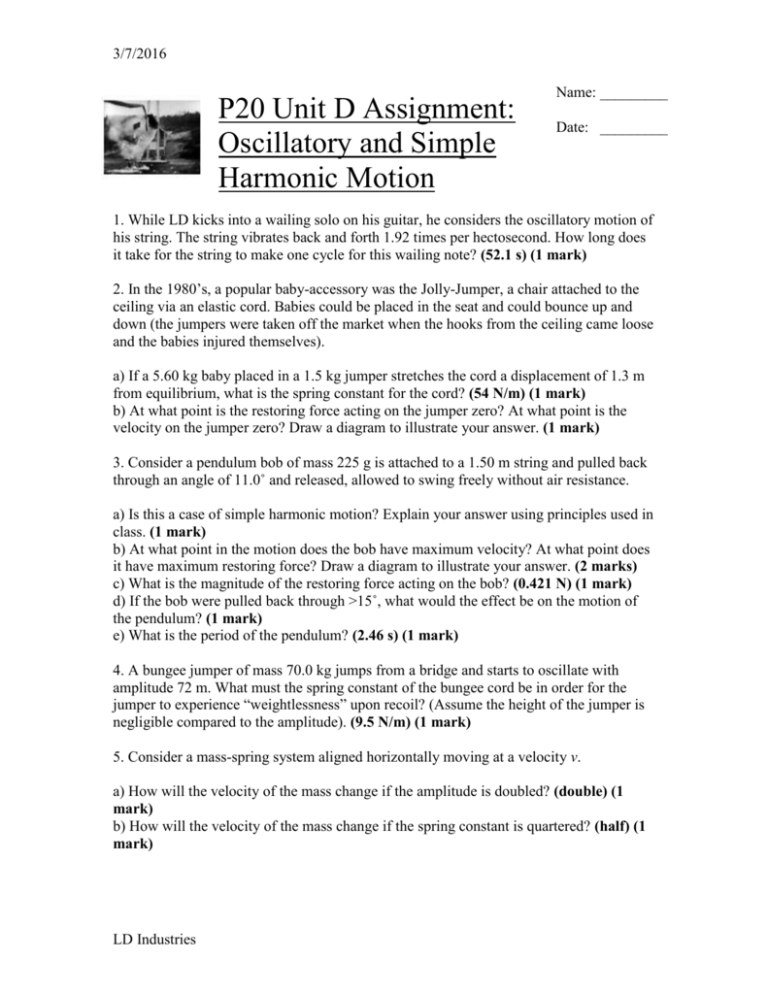
3/7/2016 P20 Unit D Assignment: Oscillatory and Simple Harmonic Motion Name: _________ Date: _________ 1. While LD kicks into a wailing solo on his guitar, he considers the oscillatory motion of his string. The string vibrates back and forth 1.92 times per hectosecond. How long does it take for the string to make one cycle for this wailing note? (52.1 s) (1 mark) 2. In the 1980’s, a popular baby-accessory was the Jolly-Jumper, a chair attached to the ceiling via an elastic cord. Babies could be placed in the seat and could bounce up and down (the jumpers were taken off the market when the hooks from the ceiling came loose and the babies injured themselves). a) If a 5.60 kg baby placed in a 1.5 kg jumper stretches the cord a displacement of 1.3 m from equilibrium, what is the spring constant for the cord? (54 N/m) (1 mark) b) At what point is the restoring force acting on the jumper zero? At what point is the velocity on the jumper zero? Draw a diagram to illustrate your answer. (1 mark) 3. Consider a pendulum bob of mass 225 g is attached to a 1.50 m string and pulled back through an angle of 11.0˚ and released, allowed to swing freely without air resistance. a) Is this a case of simple harmonic motion? Explain your answer using principles used in class. (1 mark) b) At what point in the motion does the bob have maximum velocity? At what point does it have maximum restoring force? Draw a diagram to illustrate your answer. (2 marks) c) What is the magnitude of the restoring force acting on the bob? (0.421 N) (1 mark) d) If the bob were pulled back through >15˚, what would the effect be on the motion of the pendulum? (1 mark) e) What is the period of the pendulum? (2.46 s) (1 mark) 4. A bungee jumper of mass 70.0 kg jumps from a bridge and starts to oscillate with amplitude 72 m. What must the spring constant of the bungee cord be in order for the jumper to experience “weightlessness” upon recoil? (Assume the height of the jumper is negligible compared to the amplitude). (9.5 N/m) (1 mark) 5. Consider a mass-spring system aligned horizontally moving at a velocity v. a) How will the velocity of the mass change if the amplitude is doubled? (double) (1 mark) b) How will the velocity of the mass change if the spring constant is quartered? (half) (1 mark) LD Industries 3/7/2016 6. LD has a collection of springs at home of varying spring constants. He keeps them all lined up on a shelf and labels them with their spring constants. One day, LD’s cleaning lady vacuums up all the labels and rearranges the springs so that LD can’t tell them apart! Describe an experimental method for determining the spring constant of each spring using only the following equipment: a stop-watch, a 1 kg mass, a TI-84 graphing calculator and a Physics 20/30 formula sheet. (3 marks) 7. What is the period of a vertical mass-spring system that has an amplitude of 71.3 cm and a maximum speed of 7.02 m/s2? The spring constant is 12.07 N/m. (0.638 s) (1 mark) 8. A 50.0 cm pendulum is placed on the Moon, where g = 1.64 m/s2. What is the period of the pendulum? (3.47 s) (1 mark) 9. Two different springs, A and B, are attached together at one end. Spring B is attached to A, which is attached to the wall as shown below. The spring constant of A = 100 N/m and of B = 50.0 N/m. What is the combined displacement of the springs when a force of 25.0 N is applied to the springs? (2 marks) Bonus Questions: Answer only ONE!!! Fair Bonus Question: Complete conceptual overview on page 389. Staple on a separate piece of paper for your solution. Unfair Bonus Question: Research one other disaster caused by forced resonance frequency. LD Industries

